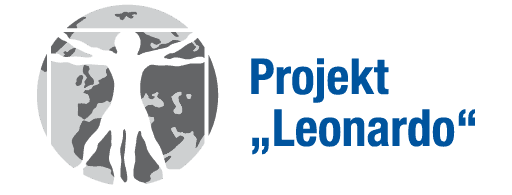leonardo@humtec.rwth-aachen.de
Natural Media of Human Communication
Interdisciplinary insights into human cognition, language, and technology
Responsibility
Contact
Imen El Amouri, B. Sc.
Information
Start
10.04.2018
Time
Tuesday, 18.15-19.45 h
Venue
Hörsaal IV, Hauptgebäude, 1010I141
52072
Aachen
Course description
This module explores connections among the human mind, language, and other media we naturally use to express ourselves and to understand the people around us. We use spoken language(s) to talk to others and to solve problems, we read our friends’ facial expressions to find out what they might think or feel, we point with our fingers when giving directions, and we are quite good at telling whether somebody is relaxed or agitated from looking at her or his body posture. Users of sign languages recruit their hands, mimics and the space around them to converse, tell elaborate stories, or create poetry.
What is common to all these uses of ‘natural media’ is that no artificial or technical medium is needed to connect and communicate. Human face-to-face interaction is the most natural and fundamental way to communicate, and yet it is a complex mix of finely coordinated bodily movements, speech sounds, mimics, looks, posture, and so forth. It concerns all of us, and understanding the principles – and the beauty – of it, remains one of the big challenges of personal and scientific inquiry. Now, in the era of electronic media, another crucial task is to preserve some of the intuitiveness in technological and virtual environments (e.g., mobile communication, virtual reality games, etc.).
Class presentations and discussions will concern the multimodal nature of language and interaction in various settings. One of the guiding questions is how the different natural media are used in everyday communication, and what the advantages and limits of each medium seem to be. What can gestures do that spoken language cannot do as easily? And what does this tell us about human cognition and behavior? We will gain insights into numerical cognition and in how hearing-impaired and deaf people communicate with sign language. Another central interest is to see how scientists from various disciplines merge their expertise to investigate the forms and functions of natural media in different contexts. For example, what happens in people’s heads when language or motor skills break down due to brain damage? We will also discuss issues in automated speech and sign language recognition. Along the way, students will become familiar with the methods researchers use to examine human communicative behavior, such as audio/video analysis, experimental design, and brain imaging.
Language of instruction
To give all students the opportunity to benefit from an international setting, all lectures and discussions will be held in English. During the discussion sessions, questions and answers may be translated. The English readings for the course will be at a manageable level.
Program
April 10
Introduction to module; what is a science slam?
April 17
Semiotic basics of communication: Understanding natural and cultural signs
Prof. Dr. Irene Mittelberg
Linguistics & Cognitive Semiotics; HumTec & SignGes
April 24
Lending language a hand: The role of gesture in speech production & multimodal communication
Dr. Prakaiwan Vajrabhaya
Linguistics & Cognitive Semiotics; HumTec & SignGes; Informatics 5
May 8
Hands, numbers, and counting: Behavioral and brain activation studies
Prof. Dr. Klaus Willmes-von Hinckeldey
Dept. of Neurology, University Hospital RWTH Aachen, & SignGes
May 15
Current Advances in Computational Social Sciences
Prof. Dr. Markus Strohmaier
Computational Social Sciences and Humanities (CSSH); HumTec Center for Interdisciplinary Research in Science and Technology & Dept. of Computer Science
May 29
If so many are ‘few’, how few are ‘many’? At the interface of language, cognition, and the brain
Prof. Dr. Stefan Heim
RWTH Clinic of Neurology & Clinic of Psychiatry, Psychotherapy and Psychosomatics; Research Centre Jülich
June 12
Sign Languages: Linguistic, cognitive, and cultural aspects
Horst Sieprath & Dr. Klaudia Grote
RWTH Aachen Center for Sign Language and Gesture (SignGes)
June 26
Science slam competition
Requirements
Participants are expected to do the assigned readings as class preparations, to actively engage in class discussions. To earn credits for a ‘Leistungsnachweis’, each student is further asked to participate in a science slam presentation on one of the topics treated during the semester (in groups of 2 or 3 students). More information will be provided in class.

